Q&A: A look at solar plane attempting round-the-world trip
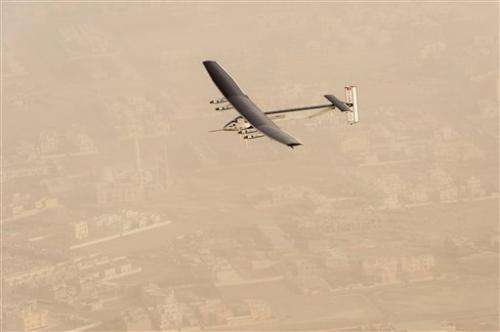
Two Swiss pioneers are attempting to fly around the world in a solar-powered airplane without a drop of fossil fuel. Here's a look at the plane and the pioneers behind it:
___
HOW IS THE PLANE FLYING ONLY ON SOLAR POWER?
Described by its creators as "an airborne laboratory," the single-seat Solar Impulse 2 has 17,248 ultra-efficient solar cells that transfer solar energy to four electrical motors that power the plane's propellers. The cells also recharge four lithium polymer batteries to power the plane at night. At around 2,300 kilograms (5,070 pounds), the carbon-fiber Si2 weighs about 2,300 kilograms (5,070 pounds), about as much as a minivan or mid-sized truck. An empty Boeing 747, which has about the same wing span, weighs some 180,000 kilograms (400,000 pounds).
___
HOW FAST WILL IT FLY AND AT WHAT HEIGHTS?
The plane's ideal flight speed is about 25 knots, or 45 kph (28 mph), though that can double during the day when sun's rays are strongest. The plane will reach an altitude of around 28,000 feet (8,500 meters) during the day and at night dip to around 5,000 feet (1,500 meters) when flying over oceans. During landing and takeoff, the plane is guided by runners and bicyclists who help steady it.
___
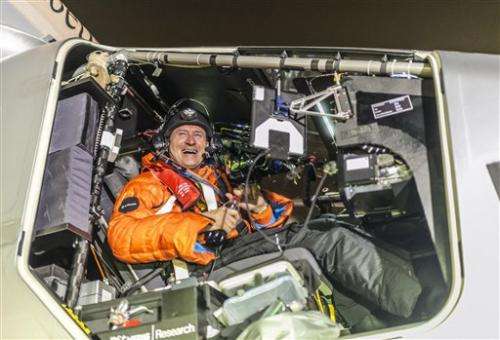
WHO ARE THE SWISS PIONEERS BEHIND THIS AIRCRAFT?
Psychiatrist Bertrand Piccard, 57, is the son of undersea explorer Jacques Piccard and a grandson of balloonist Auguste Piccard. In 1999, he became the first person to circumnavigate the globe non-stop in a hot air balloon. André Borschberg, 62, is both an investor and an entrepreneur. He is CEO and co-founder of Solar Impulse, which he started in 2003 with Piccard. The two men will trade off piloting during layovers.
___
WHAT ARE THE CHALLENGES THEY FACE ON THIS JOURNEY?
Piccard and Borschberg will have to make it across Asia before the start of the monsoon season. Their physical and mental endurance will be tested as they fly over the Pacific and Atlantic oceans. Those legs of the trip mean five days and five nights of flying alone. Borschberg has been practicing yoga and Piccard self-hypnosis to prepare for the long solo flights. They aim to rest a maximum of 20 minutes straight, repeating the naps 12 times over a 24-hour period. Goggles worn over the pilot's eyes will flash lights to wake him up. Neither pilot will be able to stand in the cockpit while flying, though its seat reclines for stretching and its cushion can be removed for access to a toilet. There is no running water onboard. Armbands placed underneath their suits will buzz if the plane isn't flying level. The small cockpit is not pressurized, so they will be able to feel the changes in temperature outside, which will range from -40 degrees Celsius (-40 degrees Fahrenheit) to 40 degrees Celsius (104 degrees Fahrenheit).
___
WHERE WILL THE PLANE MAKE ITS LAYOVERS AND WHY?
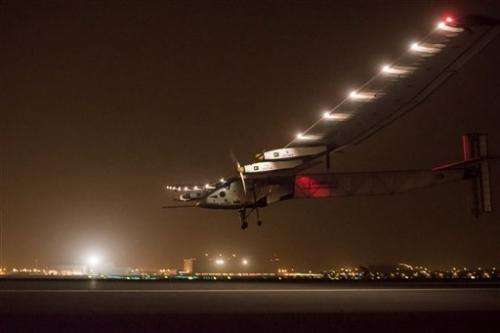
As it travels some 35,000 kilometers (21,700 miles) around the world, the Si2 will stop in 12 cities. The actual flight days are just 25, but the course of the journey is roughly five months because organizers plan public events for governments, schools and universities along the way. After reaching Ahmedabad, India, the team heads to another Indian city, then Myanmar and to Chongqing and Nanjing in China. After crossing the Pacific and landing in Hawaii, they plan to fly across the U.S., with stopovers in Phoenix and New York City. After crossing the Atlantic, the team says they either will stop in southern Europe or Morocco before finishing where the journey started in Abu Dhabi.
___
WHAT DO ORGANIZERS HOPE TO ACCOMPLISH?
The project, which began in 2002 and is estimated to cost more than $100 million, is aimed at highlighting the importance of renewable energy and the spirit of innovation. Piccard and Borschberg encourage people to discuss the project online using (hashtag)FutureIsClean to send a "strong message for clean technologies." They hope to mobilize politicians, governments, celebrities and private citizens ahead of the Conference on Climate Change of the United Nations, which will define the new Kyoto protocol in December 2015 in Paris.
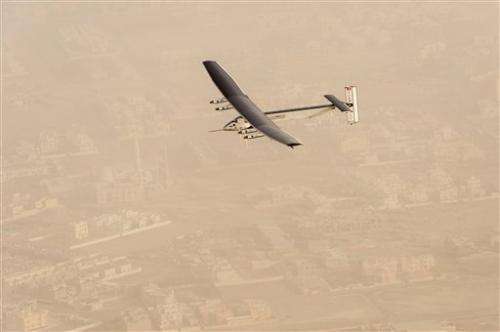
___
HOW CAN I FOLLOW THEIR JOURNEY?
Those curious can track the aircraft on Solar Impulse's website, which provides live information about the plane's battery status, energy consumption, location and flight path, as well as how much the pilot has slept and how much food and water he has left. A video feed shows the plane's Monaco-based control room and footage from the cockpit.
-
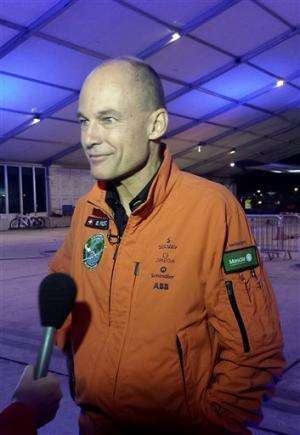
Solar Impulse co-founder Bertrand Piccard speaks to reporters at an airport in Abu Dhabi, United Arab Emirates before scheduled takeoff Monday, March 9, 2015. Piccard is one of two Swiss pilots who will be flying the aircraft in its first round-the-world journey propelled solely by the sun's energy. (AP Photo/Aya Batrawy) -
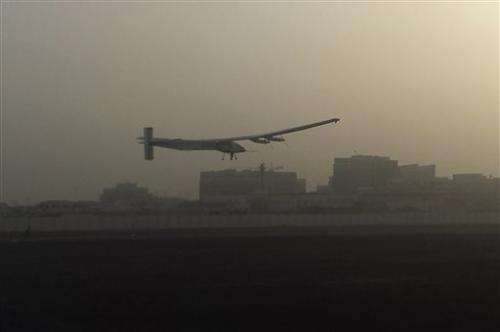
A Swiss solar-powered plane takes off at an airport in Abu Dhabi, United Arab Emirates, early Monday, March 9, 2015, marking the start of the first attempt to fly around the world without a drop of fuel. Solar Impulse founder Andre Borschberg was at the controls of the single-seater when it took off from the Al Bateen Executive Airport. Borschberg will trade off piloting with Solar Impulse co-founder Bertrand Piccard during stop-overs on a journey that will take months to complete. (AP Photo/Aya Batrawy) -
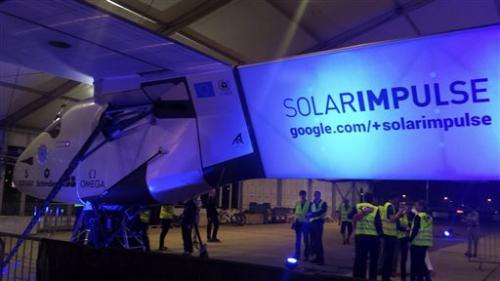
The Solar Impulse 2 prepares to depart from Abu Dhabi, United Arab Emirates, early Monday, March 9, 2015. The Swiss solar-powered plane took off from Abu Dhabi early Monday, marking the start of the first attempt to fly around the world without a drop of fuel. (AP Photo/Aya Batrawy)
More information: Solar Impulse: www.solarimpulse.com
© 2015 The Associated Press. All rights reserved.




















